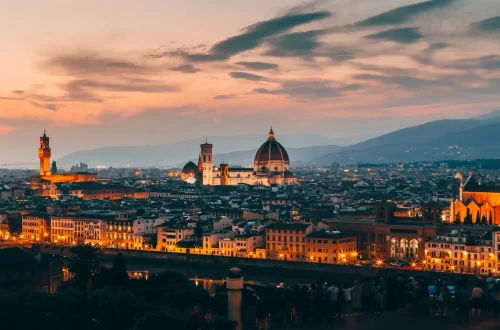Obtaining Italian citizenship by descent, also known as jus sanguinis, is a journey that requires meticulous preparation and attention to detail. The foundation of this process lies in the accurate collection and preparation of vital documents that trace your lineage back to your Italian parent or grandparent.
Proper documentation is not just a formality; it is the bedrock upon which your citizenship application rests. Any missing or incorrect document can delay or even jeopardize your application. Therefore, it is of the utmost importance to ensure proper documentation.
Essential documents for Italian citizenship
To embark on this journey, you must gather a series of essential documents. These documents serve as the proof of your Italian lineage and your eligibility for citizenship. Here’s a closer look at the key documents you will need:
- Birth Certificate of the Italian Ancestor: This is perhaps the most critical document. It establishes the nationality of your ancestor, which is the primary basis for your claim to citizenship. Without this document, your application cannot proceed.
- Marriage and death certificates (if applicable): These documents are necessary for each generation in your family line leading up to you. They help to create a continuous and traceable line of descent from your Italian ancestor to yourself.
- Birth certificates of descendants: You will need the birth certificates of all descendants in your lineage, including your own. These documents further solidify the continuity of your Italian heritage.
- Non-naturalization certificate: You must prove that your Italian ancestor held exclusive Italian citizenship at the time of their death. Non-naturalization certificates will prove that your Italian ancestor never naturalized as a citizen of another country.
- Translations and apostilles: Many documents, especially those issued outside of Italy, must be translated into Italian and authenticated with an apostille according to the Hague Convention. This step ensures that your documents are recognized and accepted by Italian authorities.
Tips for collecting and preparing documents
Collecting and preparing these documents can be a daunting task, but with careful planning and attention to detail, it can be managed effectively. Here are some tips to help you navigate this process:
- Thorough verification: Before you start the application process, verify that you have all the necessary certificates, records, and documents for each generation in your lineage. Missing any document can lead to significant delays.
- Corrections and updates: Errors in certificates, such as name variations or incorrect dates, are common. It is essential to correct these errors before submitting your application. Inconsistencies can raise questions and require additional clarifications, causing delays.
- Requests for documents abroad: If you need documents issued outside of Italy, start the request process as early as possible. Obtaining these documents can take time.
- Apostille and translation requirements: Remember that all foreign documents must be translated into Italian and authenticated with an apostille. This step is crucial to ensure that your documents are valid in Italy.
Take advantage of specialized assistance to secure your passport for a borderless future.
Risks of documentation errors
The importance of accurate documentation cannot be overstated. Errors or missing documents can lead to the rejection of your application or significant delays. Here are some specific risks associated with documentation errors:
- Inconsistencies in names and dates: Discrepancies between names and dates in different documents can cause confusion and require additional explanations. Ensure that all names and dates are consistent across all documents.
- Loss of documents: Make certified copies of all documents to avoid the risk of losing them during the process. Having backups ensures that you can continue your application without interruption.
- Validity of certificates: Some documents, such as birth and marriage certificates, may need to be issued close to the application to be considered valid. Check the requirements and make sure your documents are up to date.
Preparation is key to success
In conclusion, obtaining Italian citizenship by descent requires a high level of care and attention to detail during the document collection and preparation process. Proper documentation is the key to a successful application. By ensuring that all documents are complete, accurate, and properly translated and authenticated with an apostille, you increase your chances of a smooth and successful process.
Taking the time to prepare thoroughly will save you from potential setbacks and delays, ultimately making your journey to Italian citizenship a rewarding experience.If the process of collecting and preparing documents seems overwhelming, don’t worry! Io.citizen’s team is here to help.
With extensive experience in handling citizenship applications, we can check if your documentation is complete and valid, making your path to Italian citizenship as smooth as possible. Contact us today to start your application with confidence!






